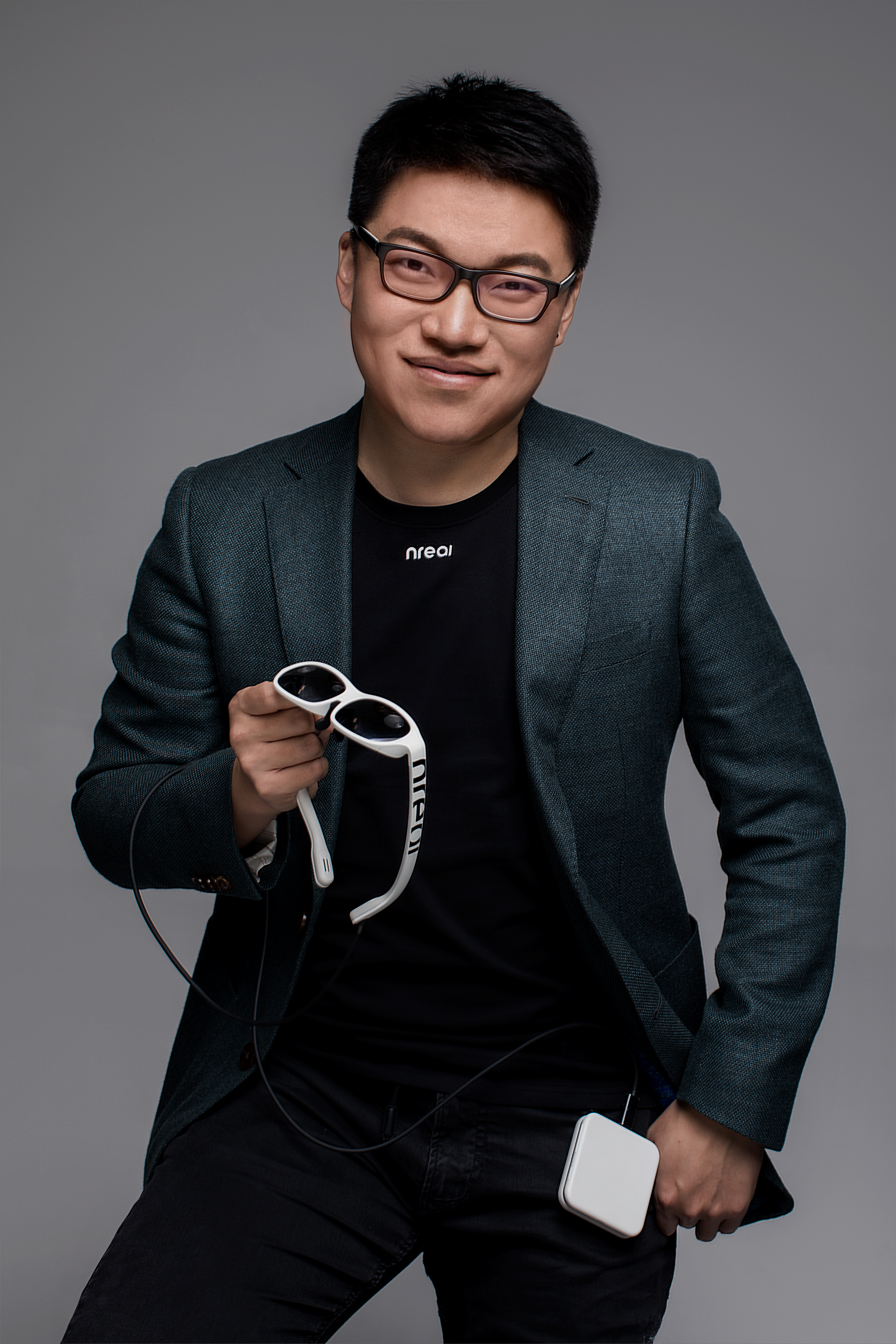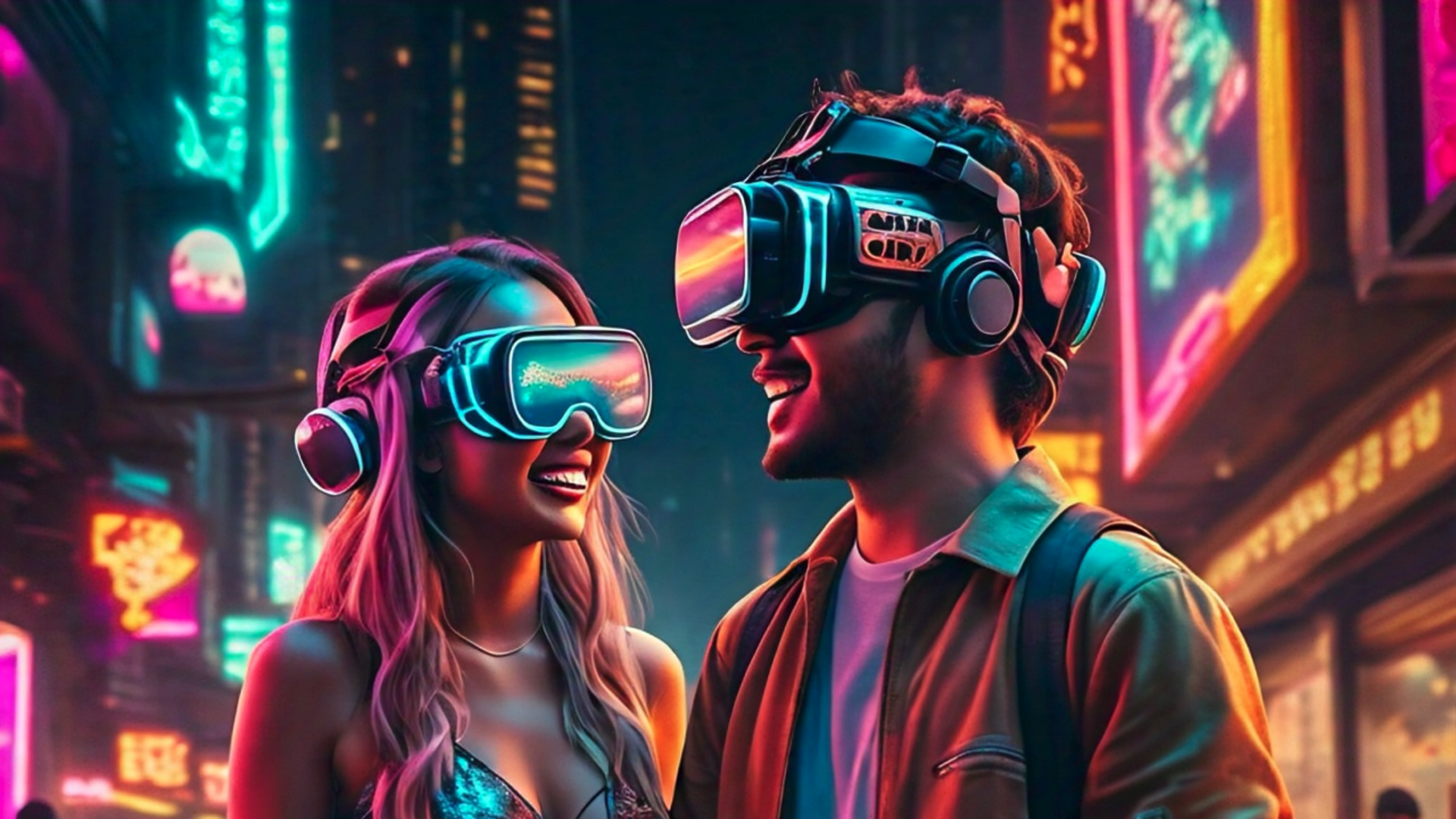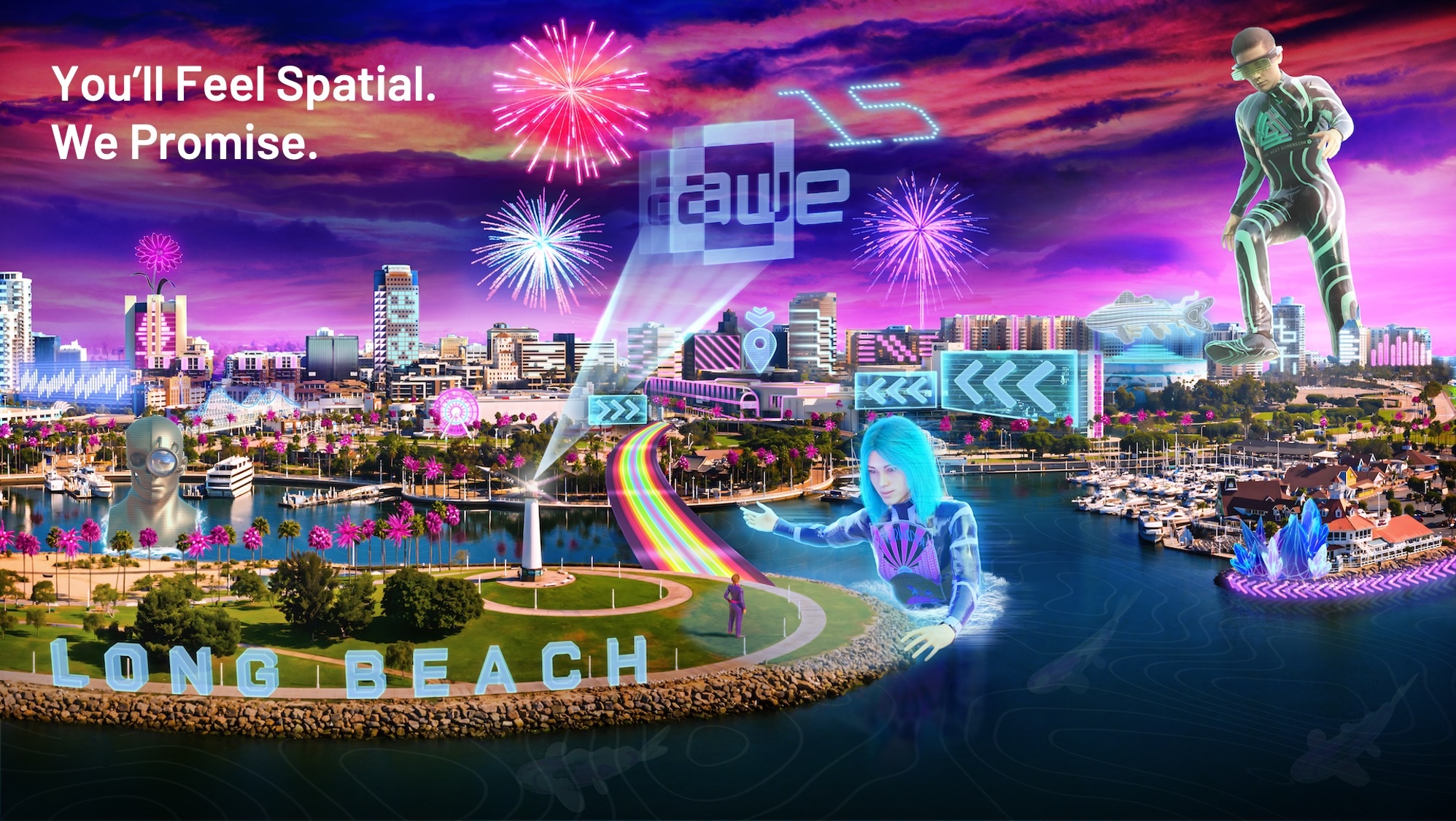Interview with Chi Xu, Founder & CEO, nreal

Emily (AWE): To begin, could you provide a little background on yourself and your career? What is your role at nreal and what was your very first encounter with AR/VR?
Chi: Before nreal, I was working for NVIDIA, building the architecture for its GPU, and later became an early employee of Magic Leap. This was my first encounter with AR. At Magic Leap, I worked specifically on SLAM and embedded systems optimization. During this tenure, I became a true believer in AR. in 2015, I believe that the technology had the opportunity to get adopted sooner than people expected, so I wanted to be at the forefront of this unmet opportunity. That's when I came back to China to explore opportunities and later founded nreal.
Prior to getting my career started, I received a B.S. degree in Electrical Engineering from Zhejiang University and later a Ph.D. in Electrical and Computer Engineering from the University of Minnesota.
Emily: What are you most excited for at the 10th AWE USA?
Chi: AWE USA is undoubtedly the largest AR/VR event in the world and the need-to-know people and brands in the industry are all corralled in one place. We're excited to be revealing some key milestones and our vision for the future, which we anticipate will kickstart the much-awaited consumer adoption of mixed reality technology.
Emily: nreal made a splash at CES and MWC this year. What has the company been up to since then?
Chi: Two years ago when we started nreal, we told people that we would get a consumer AR hardware developed and announced to the market in two years, but few people believed us. Granted, at the time, even the world's largest companies had failed to deliver. Over the past two years, we worked really hard and finally debuted our product at CES. We were excited to show people what the right format for AR wearables should be. We believed that AR wearables had to be accessible to how people use mobile devices today, which means it has to be compatible with phones while also being comfortable to wear. Since CES, we've been working hard, based on the feedback we've been getting, to iterate the hardware so that nreal light is more portable, more comfortable to wear, and easier to access by tethering nreal light to a 5G smartphone. These are just a few of the key elements we believe will drive interest from consumers. We've also been developing the software side of the equation so that we can invite developers to create content and applications for nreal light.
Emily: Do you have any AR/VR predictions for 2019 and beyond?
Chi: In my opinion, 2019 will be the year that consumer AR will take off, and I attribute this to two major developments: First, the technology is more mature, so we're now able to fit AR and MR hardware into a sunglass-like form factor like nreal light. Most of the products you're seeing on the market are overpriced, bulky AR headsets using outdated technology; and because consumers desire convenience, there hasn't been a strong push to purchase these devices. Second, the deployment of 5G networks will accelerate the adoption of consumer AR.
At nreal, on the other hand, we've strived to make AR accessible to everybody from day one and with 5G and hardware developments converging, we're anticipating we'll make consumer-facing AR a reality.
Emily: What day are you speaking on the AWE 2019 program and what will you be discussing on stage?
Chi: Our keynote will take place at 10am on May 30 (Thursday). The focus of the keynote will include answers to the questions we've been getting since CES and MWC, but we'll also discuss the current stage of the company along with a roadmap for nreal light. That same day at 4pm, we're also running a developer-focused session, where we'll highlight the benefits of developing for nreal light while also answering any technical questions developers may have.
Emily: What is nreal's take on the future of AR/VR and how are you advancing adoption of the technology?
Chi: Today, everybody uses cell phones as their primary device. We believe that in the future smartglasses will replace smartphones, but there are two phases of adoption to get there. First, people won't put on glasses all the time. They'll only use the device to load a killer app, which is enhanced by AR. As more and more killer apps become available on the market, users will realize that in more and more use cases MR glasses are a necessity.
Later in the second stage, once we shave off even more weight in a future iteration of nreal light, it won't look and feel any different from wearing normal glasses. By then, people will realize they can't live without smartglasses and won't want to hold a smartphone anymore.
Emily: What industries do you think have the most to gain from widespread adoption of AR/VR?
Chi: We believe that for consumers, it's the entertainment and productivity verticals that have the most to gain. Entertainment, including gaming, social networking, watching movies and even online shopping, will be the first purchasing drivers for nreal light. As for productivity, we anticipate any basic work-related applications, including calendars, task management tools or even messaging, to be among the first applications to appear for consumer mixed reality glasses.
For enterprise, we believe every industry will benefit for three reasons: First, the ability to multitask with smartglasses will empower users to finish tasks more efficiently . Second, instant/time-sensitive information like instructions will empower workers (ex. logistics workers at factories receiving information about which packages to pick and sort in lieu of looking back and forth at a monitor) to work fast and effectively. Finally, liberating people from using both hands is paramount to adoption. For example, a worker can simply scan a barcode to check which station he or she has to walk to, even with heavy boxes in hand.
Emily: If you could give a sneak peek at your upcoming main stage presentation, what would you share in advance to ensure AWE attendees don't miss it?
Chi: People are still waiting for a killer product that can give the industry the kick it needs, and lead content providers and other partners to dedicate the resources to further this industry. Frankly, the future of consumer AR is around the corner and we believe nreal is the killer product to push us forward to an inevitable future in which smartglasses are worn just as frequently as we carry around a smartphone today. We will share the roadmap for nreal light and discuss how the AR industry will move forward from here.



